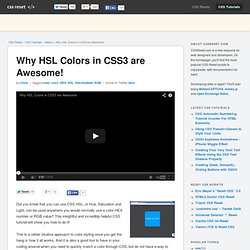

Safari Web Content Guide: Configuring the Viewport. How to build a responsive HTML5 website - a step by step tutorial. Rating: 8.6/10 (1247 votes cast) Required knowledge level: intermediate In this responsive web design tutorial we will create an awesome responsive HTML5 website starting from scratch.

I tried to include as many different features as possible, so we will be dealing with a jQuery slider, CSS3 transitions and animations, CSS Media Queries and so on. This part of the tutorial will show you the HTML structure and the required scripts in a step by step tutorial. The second part will then show you how to style it using CSS3 features to create this stunning HTML5 cross-browser responsive website. Preview HTML5 responsive website Download Download it from GitHub7kB93356Times downloaded Please note that this tutorial is made for people who already have an intermediate knowledge level. First of all let´s have a look at the basic structure of our website. Creating the head – Doctype and Meta Tags In our head section let´s set the charset to UTF-8 which is also easier now in HTML5. <! That´s it already! Automatically Adapt Your Site for Any Screen Size with Dreamweaver. Now you're ready to create a media queries style sheet and link in the alternate sheets you just created.

Follow these steps: The final preset, Desktop, has a Min Width of 769 pixels and leaves the Max Width field blank. It uses the desktop.css style sheet. Media queries and alternate CSS style sheets are a powerful tool to make your site work well across the breadth of devices that people might use to view it. Dreamweaver's tools make setting up the media queries relatively easy, demystifying a previously confusing process. Tom Negrino is the author or coauthor of more than 40 books, covering such diverse topics as iCloud, Dreamweaver, JavaScript, Keynote, Microsoft Office, CSS, and more. Lightbox 2. Why HSL Colors in CSS3 are Awesome! Did you know that you can use CSS HSL, or Hue, Saturation and Light, can be used anywhere you would normally use a color HEX number or RGB value?

This insightful and incredibly helpful CSS tutorial will show you how to do it! This is a rather intuitive approach to color styling once you get the hang is how it all works. And it is also a good tool to have in your coding arsenal when you need to quickly match a color through CSS, but do not have a way to easily generate the same HEX code or RGB value. By the end of this video, you should be able to apply this to any of your projects moving forward. And it’s supported in every browser, except IE versions 6-8. hue |(h)yoō|noun a color or shade : her face lost its golden hue | verdigris is greenish-yellow in hue.• the attribute of a color by virtue of which it is discernible as red, green, etc., and which is dependent on its dominant wavelength, and independent of intensity or lightness.
One other thing mentioned above is very important. Automatically Adapt Your Site for Any Screen Size with Dreamweaver. Using CSS Pseudo-Classes to Style Your Links. Using a CSS Pseudo-Class is one way to gain added control over conditional styling in your projects, perfect for links and other interactive elements.

This insightful video tutorial will help you understand how. CSS Pseudo-Classes are pre-defined classes or styles that can be applied to tags or elements conditionally. This gives you a lot of power in how you allow users to engage with your content. For instance, it has become much more common to see links that have a different color representing their current state. This video uses the example of a link that is untouched, versus a link that has been visited or is active. There are many reasons you may want to include a styling choice like this, and added communication is at the top of that list. If this lesson in using CSS pseudo-classes was helpful to you, you should also check out this post on using HSL colors to help you find more unique color schemes to work with.